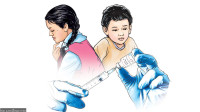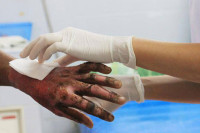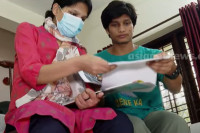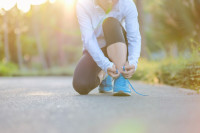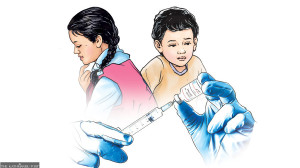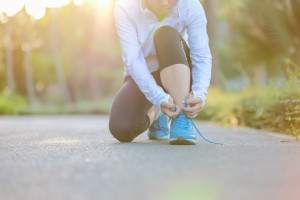Health
Burn victims forced to foot costly medical bills despite ‘free care’ pledge
As mercury dips, burn cases rise significantly. Doctors advise caution while using fire to keep warm.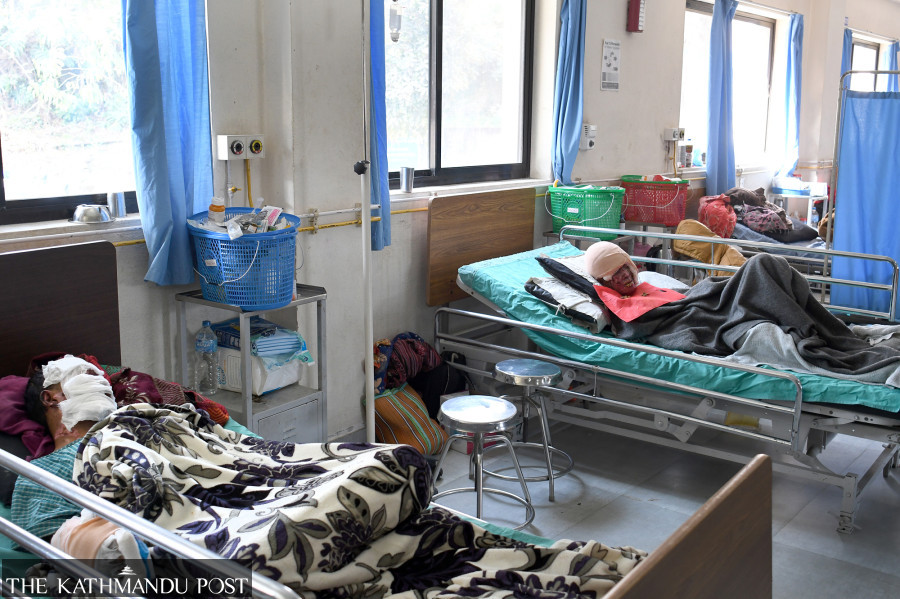
Arjun Poudel
Urmila Devi Jha, a burn victim from Hariwan, Sarlahi district, has been admitted to Kirtipur Hospital for treatment of burn injuries.
The 45-year-old, burnt while she was sitting by fire some two weeks ago, was brought to the hospital only on Friday.
Her family took her to a local hospital in Birgunj and spent around Rs200,000 before they brought her to Kathmandu as they did not have money for further treatment.
“We spent all our money on the patient’s treatment,” said Dinanath Jha, the patient’s son-in-law. “We cannot afford to pay for further treatment.”
Doctors say around 35 percent of Jha’s body parts—including back, leg, and hands—have been badly burnt and delay in bringing her to hospital has further complicated the matter.
Nepal is among the countries with the highest incidence of burn injuries. It is the second most common injury in rural Nepal, accounting for 5 percent of disabilities, according to the World Health Organisation.
In October, the government decided to provide free treatment to impoverished burn victims. However, even two months after the declaration, the free scheme has not been implemented in any hospital.
Poor burn victims and their relatives are forced to pay their medical bills.
“The work procedure sent to us by the government is not specific, as it does not say anything about who would get free treatment, what would be the process of reimbursement, and budget arrangements, among other things,” said Dr Kiran Nakarmi, director at Kirtipur Hospital.
“We do not deprive patients of treatment just because they cannot afford to pay medical bills. But many patients would easily get free treatment if the work procedure had been detailed.”
Had the government decision been implemented on time, poor burn victims like Jha seeking care at Kirtipur Hospital and other state-run health facilities including Bir Hospital of Bagmati Province, BP Koirala Institute of Health Sciences of Koshi Province, Narayani Hospital in Madhesh Province and Pokhara Institute of Health Sciences of Gandaki Province would not have been forced to foot their costly medical bills.
Likewise, patients would also get free treatment at Bheri Hospital of Lumbini Province, Surkhet Provincial Hospital of Karnali Province and Seti Provincial Hospital of Sudurpaschim Province.
Minister for Health and Population Pradip Paudel has been announcing one free scheme after another but is seemingly unbothered about their implementation. The Post’s attempts to contact Minister Paudel could not succeed.
“We heard of the free scheme for burn victims from the media but we are yet to get any instruction or the budget to implement it,” said Dr Peeyush Dahal, chief of the Burns and Plastic Surgery Unit at Bir Hospital. “Many burn victims can’t afford to pay medical bills even if Bir hospital does not charge much for treatment.”
Meanwhile, the number of burn incidents has risen nationwide, amid declining temperatures. As people make bonfires to stay warm, the number of burn cases has increased alarmingly, according to the Nepal Cleft and Burn Centre in Kirtipur [Kirtipur Hospital].
“In the summer, we have around 20 burn patients a day, but the number rises to double that and even more in the winter months,” Nakarmi said. “We have 37 patients today [Sunday], and five of them were brought on Saturday night. Most of the victims were burnt while sitting by the fire.”
Elderly women and under-age children are more vulnerable to fire incidents, as they remain in the house or near fireplaces most of the time. They have a weaker immune system than adults, and that makes the recovery process more complicated for them, according to doctors.
Every winter, the hospital converts other general wards to burn units due to a massive influx of burn victims.
Doctors say awareness alone can substantially increase the burn patients’ chances of survival.
“Don’t leave small children and elderly people close to the fire,” said Nakarmi. “Risk of women getting injured in fire is high, as the sari they wear can catch fire quickly.”
Experts suggest not letting children play near fire. Turning one’s back to fire and burning logs while sleeping at night is also dangerous, according to them.
Burn patients need enough intravenous fluids, around eight litres in 24 hours. But fulfilling this intake criteria is often not possible while transporting patients from one facility to another, which reduces their chances of survival.
The Ministry of Health and Population estimates that each year 55,000 people throughout the country suffer burn injuries.
One past study shows that over 40,000 people sustain burn injuries (minor or severe) in Nepal every year. Among them, about 1,500 to 2,000 die.




 12.12°C Kathmandu
12.12°C Kathmandu


